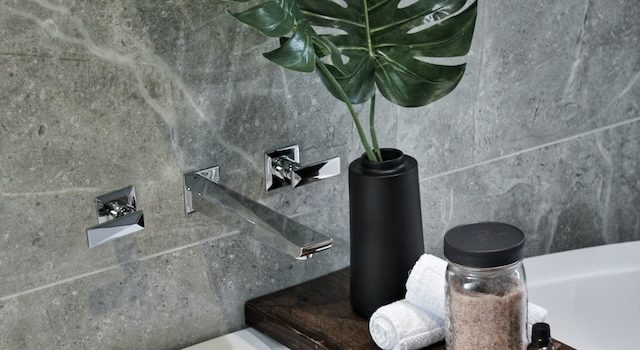
Are you tired of buying expensive herbs that only last for a few days? Why not grow your own indoor herb garden right in your kitchen! Not only will it save you money, but it will also add some greenery and fresh scents to your home. In this post, we’ll show you how to create a vertical herb garden using minimal space. Plus, we’ll share tips on caring for your herbs and recipe ideas to make the most out of their flavors. Get ready to maximize your space and enhance your cooking with these easy steps!
Why grow herbs indoors?
Growing herbs indoors has become a popular trend among homeowners and for good reasons. It allows you to have fresh herbs at your fingertips all year round, regardless of the weather conditions outside. Indoor gardening can be done in any space available such as windowsills or vertical gardens.
Moreover, growing herbs indoors not only saves money on buying expensive store-bought ones but also eliminates the need for pesticides and other chemicals used in conventional farming practices. In addition, having an indoor herb garden means you won’t have to worry about pests like rabbits or squirrels eating your plants.
Another reason why growing herbs indoors is beneficial is that it adds aesthetic value to any home. Having a small herb garden nestled in pots on a windowsill or hanging from the ceiling adds color and texture while purifying the air inside your home.
Growing indoor herbs can be an excellent hobby for those who enjoy cooking and experimenting with different flavors. With many types of culinary herbs available such as basil, thyme, mint and rosemary at your disposal- there are endless possibilities when creating new dishes!
Which herbs are best for indoor growing?
When it comes to growing herbs indoors, some are better suited than others. Here are a few of the best herbs for indoor growing:
1. Basil: This fragrant herb is easy to grow indoors and adds a delicious flavor to many dishes.
2. Mint: Mint is another great herb for indoor growing, as it doesn’t require much sunlight and can thrive in cooler temperatures.
3. Chives: These versatile herbs add a mild onion flavor to dishes and don’t take up much space in your vertical garden.
4. Parsley: Not only does this herb add freshness and brightness to meals, but it also contains several vitamins and minerals.
5. Thyme: Thyme can be grown easily indoors with plenty of sunlight, making it perfect for adding depth of flavor to soups and stews.
Remember that different herbs have different requirements when it comes to light, water, and soil conditions. Do some research on each specific herb before planting them in your vertical garden!
By choosing the right herbs for your indoor space, you’ll be able to enjoy fresh flavors all year round without having to step outside!
How to set up a vertical herb garden in your kitchen
Creating a vertical herb garden in your kitchen is a great way to maximize space and have fresh herbs at your fingertips. The first step is to choose the right location for your garden. Look for a spot that gets plenty of natural light, such as near a window or under a skylight.
Next, select the containers you’ll be using to house your herbs. Vertical gardens are perfect for small spaces because they allow you to stack pots on top of each other, saving floor space while maximizing growing potential. You can use anything from traditional terra-cotta pots to repurposed mason jars or even wall-mounted planters.
Once you’ve chosen your containers, it’s time to pick out which herbs you want to grow. Some popular choices for indoor herb gardens include basil, cilantro, chives, oregano and mint. Make sure the plants you choose all have similar lighting and watering requirements so they can thrive together.
When planting your herbs in their new homes, make sure they’re positioned securely in their containers with enough soil around them for optimal growth. As always with gardening projects indoors or outdoors don’t overwater!
Finally water regularly but not too much – once every couple of days should be enough depending on where in the world you live!
Tips for caring for your indoor herb garden
Caring for your indoor herb garden is crucial to ensure that you have a bountiful supply of fresh herbs. Here are some tips to help you keep your vertical herb garden in top condition:
1. Watering: Herbs need consistent moisture, so make sure to water them regularly. However, be careful not to overwater as this can lead to root rot.
2. Sunlight: Most herbs require plenty of sunlight, so place your vertical herb garden near a window where it can receive at least 6 hours of direct sunlight daily.
3. Pruning: Regular pruning helps prevent overcrowding and encourages bushier growth. When pruning, always cut back the stem just above a set of leaves or node.
4. Fertilizing: Indoor plants often require additional nutrients since they don’t have access to outdoor soil. Use organic fertilizer every few weeks during the growing season.
5. Pest control: Keep an eye out for pests like spider mites and aphids which can quickly spread from plant-to-plant in close quarters such as an indoor herb garden.
By following these simple tips, you’ll be able to enjoy fresh and flavorful herbs all year round!
Recipes using fresh herbs
Now that you have set up your very own vertical herb garden in your kitchen, it’s time to start using those fresh herbs! Here are a few recipe ideas to get you started:
1. Caprese salad – Combine sliced tomatoes and fresh mozzarella cheese on a plate. Drizzle with olive oil and balsamic vinegar, then sprinkle with chopped basil.
2. Herbed roasted chicken – Rub chicken breasts or thighs with a mixture of chopped rosemary, thyme, garlic, and olive oil. Roast in the oven until cooked through.
3. Minty pea soup – Cook frozen peas in vegetable broth until tender. Puree until smooth with a handful of fresh mint leaves.
4. Pesto pasta – Blend together basil leaves, pine nuts, garlic, Parmesan cheese, and olive oil for an easy pesto sauce. Toss with cooked pasta and cherry tomatoes.
These are just a few ideas to get you started – there are endless possibilities when it comes to cooking with fresh herbs! Not only will they add flavor to your dishes but also provide additional health benefits as well as being budget-friendly.
So go ahead and experiment – happy cooking!










